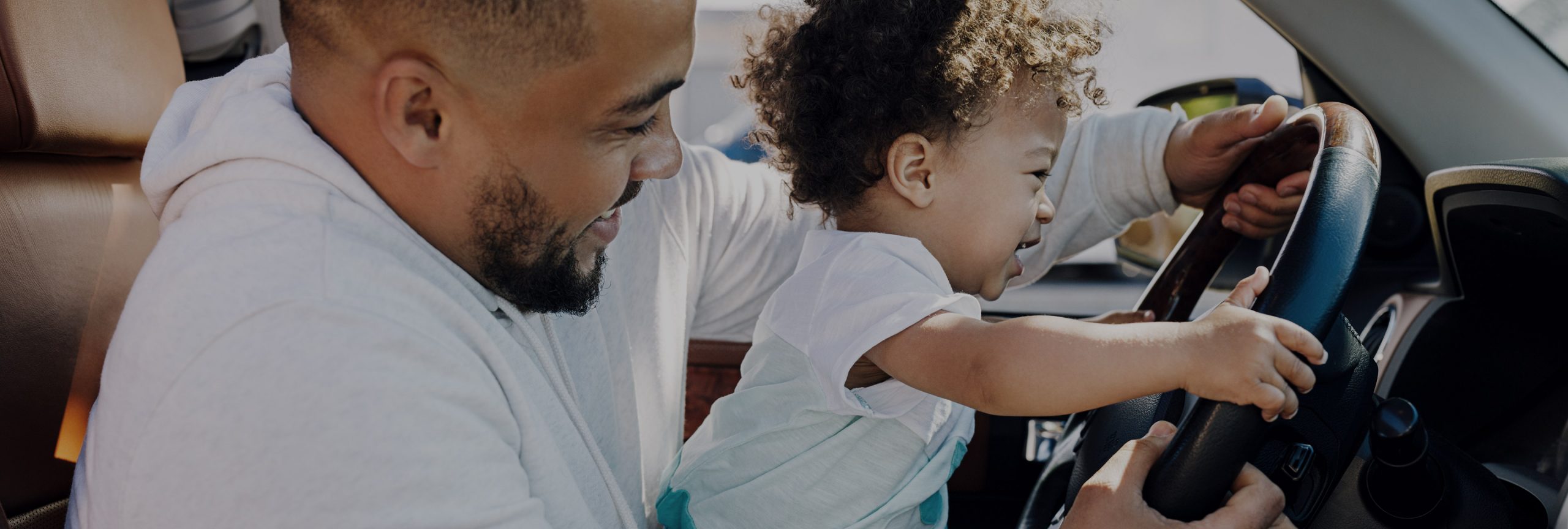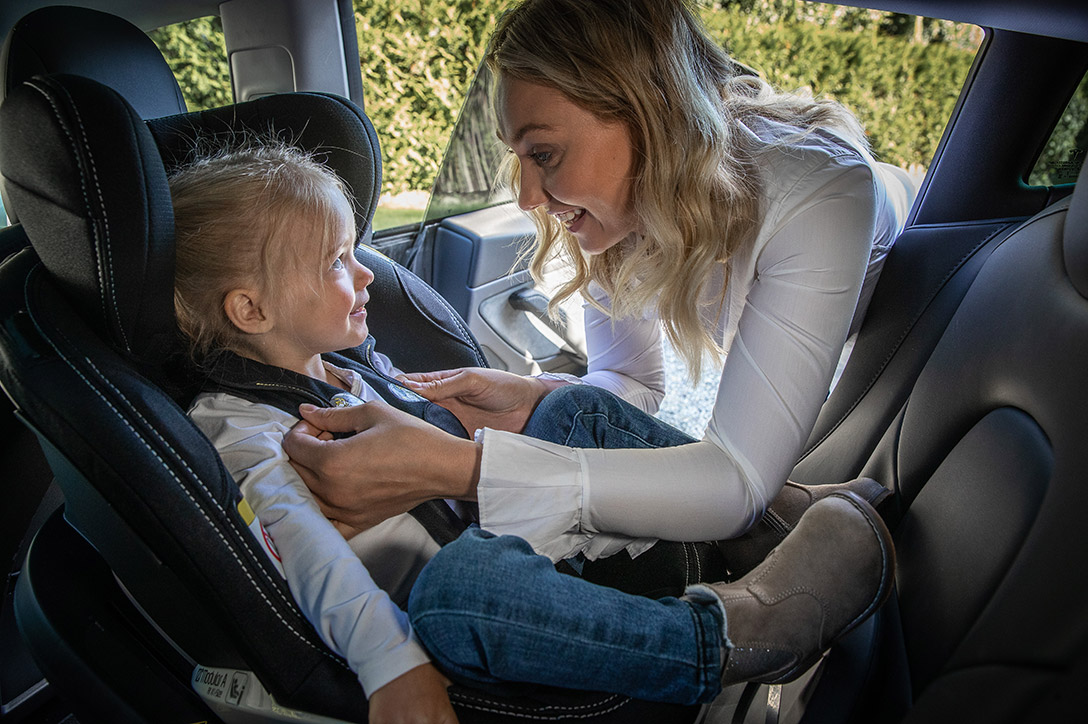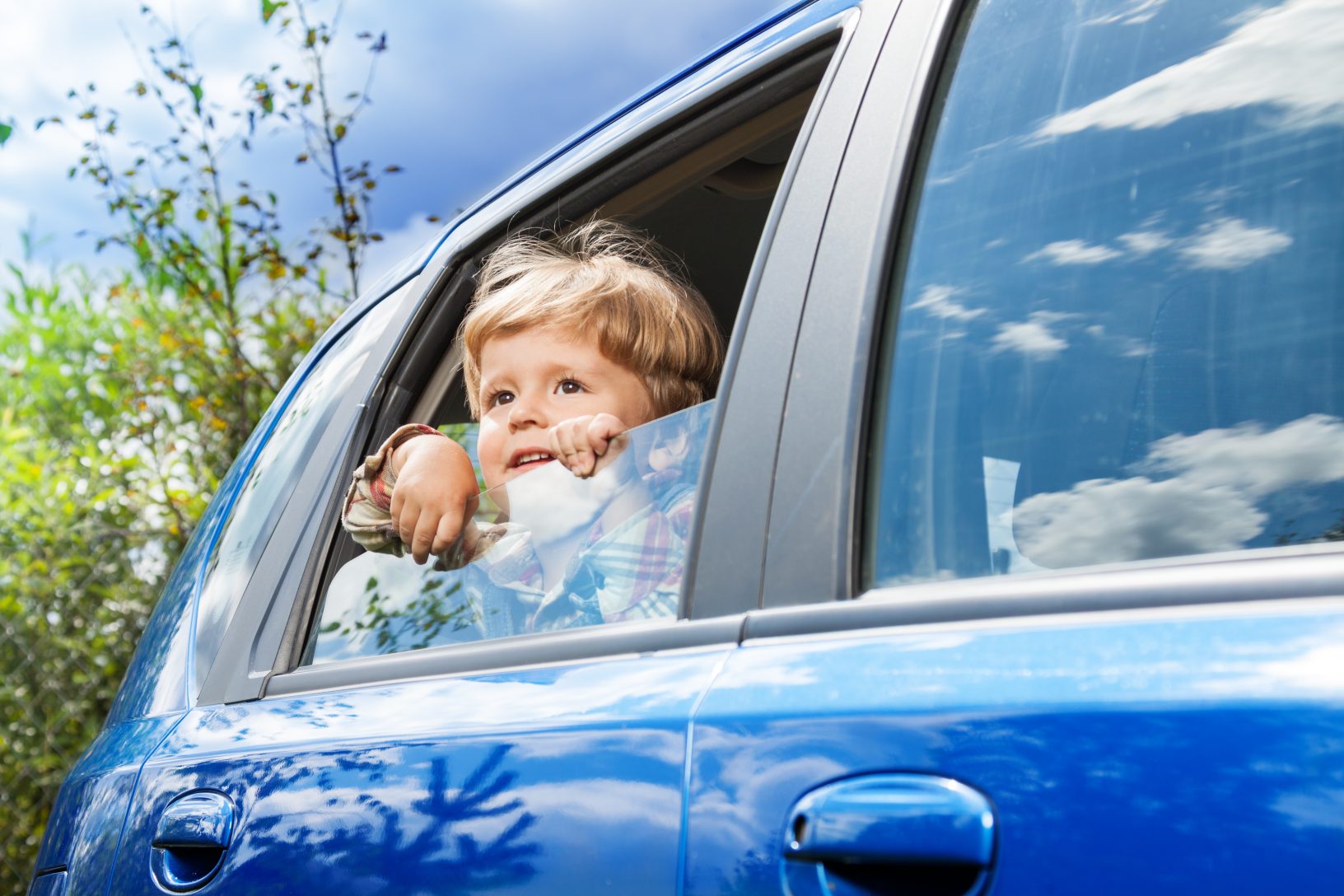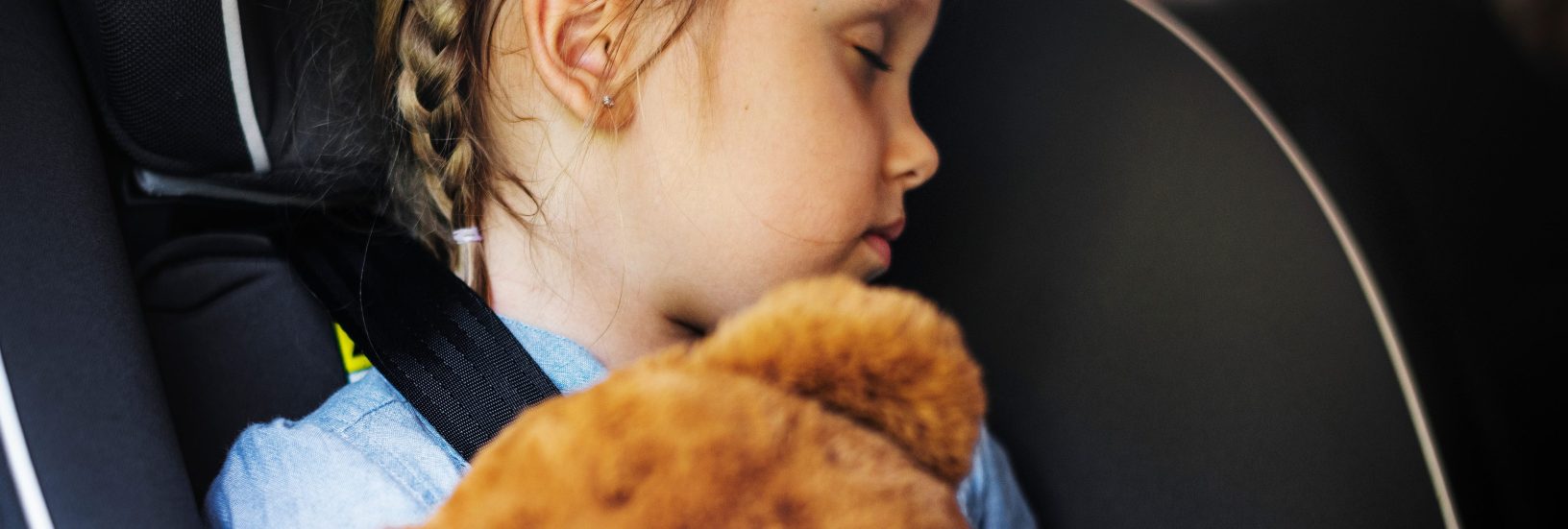Feb, 2022
What are the rules for using a child car seat?
Safety in cars has never been better than it is now.
Over the past 50 years, the number of serious incidents involving children has fallen to nearly zero. A major reason for this positive development is more focus on safety and better technology.
But focus and technology are not everything.
All parents who travel with children must comply with the current rules for traffic safety that are in place in their respective countries. A set of comprehensive rules to follow greatly helps to save children’s lives on the road.
In this article, we will take you through the most important rules you need to follow in order to feel secure when you have your child in the car.
These are the rules you must follow
Traffic safety for children is regulated by law in the same way as traffic in general. This means, among other things, that it is mandatory to restrain children while they are in a car.
One of the most important and fundamental rules is that children shorter than 135 cm (4’5”) must always use approved child safety equipment. It is also stipulated by law that children who are between 135 cm (4’5”) and 150 cm (4’11”) must also use approved child safety equipment if such equipment is available in the car.
What is approved child safety equipment?
Child safety equipment in Europe is tested and approved in accordance with the UNECE R44 or UNECE R129 standards.
These two standards have slightly different content. UNECE R129 is the newer standard and soon it will be the only standard, as UNECE R44 is being phased out. (More on that below.)
UNECE R129 aims to:
- simplify installation with IsoFix,
- extend the period of time a child uses a rear-facing child car seat,
- ensure that child car seats and modern cars are compatible with each other,
- simplify classification by using a child’s height instead of weight, and
- make child car seats safer by also testing them for side impacts.
Traditionally, it has been common to divide car seats for children into the three categories:
- infant seats,
- toddler seats and
- booster seats.
There are also “convertible” seats that can be used as an infant seat and then converted into a toddler seat.
Regardless of which type of car seat your child currently uses, it is crucially important that you move them up to the next category of seat when they grow out of their current car seat.
Below, we provide you with an overview of the two European standards that apply to the approval of child restraint systems in cars. Read more and find out which standard your car seat is approved for.
Read more: Traditional five-point harness or Holmbergs RollFix™: What should I choose?
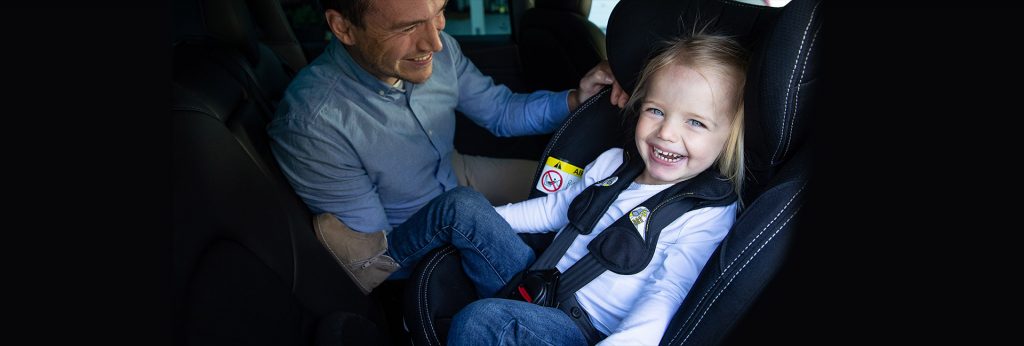
Standard UNECE R129
UNECE R129 (often called i-Size) came into force in 2013. The newest version of the standard is UNECE R129.03.
UNECE R129 differs from UNECE R44 by focusing on the height of the child and the total weight of the child and car seat. UNECE R44, on the other hand, only focuses on the weight of the child alone.
Extensive crash tests
Child car seats that are approved according to UNECE R129 are tested for side, front and rear impacts. In addition, car seats that are approved in accordance with this standard fit all new cars that are approved for i-Size. This makes it easier for parents to know that the car seat they are buying fits their car.
Impact tests performed for UNECE R129 approval are performed with Q type crash test dummies, which are more human-like than the P type crash test dummies used for UNECE R44 approval.
Infant, toddler and booster car seats in accordance with UNECE R129
Infant seats
An infant car seat that is approved in accordance with UNECE R129 is approved for a maximum height. A rear-facing infant seat can be designed for children with a maximum height of 87 cm (2’10”).
However, it is imperative to note that many infant seats on the market today are designed for a maximum height of only 75 cm (2’6”). If this applies to your child’s car seat, you must switch to a rear-facing toddler seat earlier than the UNECE R129 guideline. According to the standard, it is mandatory to have a rear-facing car seat until the child is 15 months old.
Toddler seats
A toddler car seat that is approved in accordance with UNECE R129 can no longer be used when the child reaches the maximum height for which the seat is approved. In addition to this, the seat also has a weight limitation. This can be found on the car seat’s approval label or in the seat’s user’s manual.
It is time to replace your toddler seat with a booster seat when your child has reached one of the two limitations – weight or height – regardless of which one is reached first.
When using IsoFix attachments, 33 kg (72.75 lbs) is the total permissible weight for the child and the seat together. This means that the maximum weight your child can be depends on which toddler seat you use and how much the seat weighs. You will find the necessary information about the maximum permissible weight of your child when using the seat in the seat’s user’s manual or on the seat’s approval label.
It is also worth noting that there are child car seats with baby inserts (two seats in one) that can be used from newborn until the child is the age of 4 or even older. If you have such a seat, you will find information about when it is time to remove the baby inserts in your seat’s user’s manual.
Booster seats
A booster seat is a type of child restraint that does not have an integrated harness. Instead, a child uses the vehicle’s seat belt system. These seats should not be used by children under 100 cm (3’3”) tall. The seats are designed to ensure side protection for the child up to a height of 135 cm (4’5”), but there are also many booster seats that are approved for use up to 150 cm (4’11”) tall.
All countries have different rules for how long children must use these three types of restraint systems.
According to UNECE R129, the following rules apply:
- Infant car seats are to be used from when the baby is a newborn until the child has reached a maximum height of 87 cm (2’10”). It is a common estimate that a child can use this type of seat for about 12 months.
- Rear-facing toddler car seats can be used from when the child is about 60 cm (2’) to about 105 cm (3’5”) tall. It is a common estimate that a child can use this type of seat from about 6-9 months old to 4 years old, but preferably longer if their weight and height allow it.
- Booster seats are used from when the child is about 100 cm (3’3”) to about 150 cm (4’11”) tall. It is generally estimated that the child can start using this type of seat from 4 years old at the earliest until they are about 12 years old.
NOTE! Always check which rules apply to your child car seat, as they may vary from model to model. Please note that the age ranges given are only guidelines based on average values and do not limit or guarantee the period of use.
Read your child car seat owner’s manual thoroughly as soon as you get it.
Standard UNECE R44
In addition to UNECE R129, UNECE R44 is also applicable in Europe today. The newest version of the standard is UNECE R44.04. According to this standard, child safety equipment is divided into five main groups.
- Group 0 for children weighing under 10 kg (22.05 lbs)
- Group 0+ for children weighing under 13 kg (28.66 lbs)
- Group I for children weighing from 9 kg to 18 kg (19.84 – 39.68 lbs)
- Group II for children weighing 15 kg to 25 kg (33.07 – 55.12 lbs)
- Group III for children weighing 22 kg to 36 kg (48.5 – 79.37 lbs)
All child car seats that are approved in accordance with this standard are tested with P type crash test dummies. Introduced in 1981, these were the first official crash dummies for testing child car seats in Europe.
In tests for UNECE R44.04, the car seat is tested for rear and front impacts. According to the standard, it is mandatory to have a rear-facing car seat until the child weighs 9 kg (19.84 lbs).
It is also worth noting that car seats that are approved in accordance with UNECE R44 are car-specific. This means that you as a parent must check that the seat is compatible with the specific vehicle model you own. You should be able to find this information in the owner’s manual.
Weight and height guidelines
If your child car seat is approved in accordance with UNECE R44.04, it is approved for a maximum weight. You can find information about the weight in the seat’s user’s manual and on the approval label. However, it is important to emphasize that children more often become too tall for their car seats as opposed to too heavy for them.
Therefore, it is important that you also pay attention to the child’s height in relation to the shoulder straps. The shoulder straps are in the correct position in a rear-facing seat if they are at or slightly below the shoulders. In a forward-facing seat, the straps should be at or slightly above the shoulders.
If your child uses an infant seat, their head should not protrude over the top of the headrest. There should be at least one finger width between the top of the child’s head and the upper edge of the headrest. When the child uses a toddler seat, the top of the child’s ears should not protrude beyond the highest point of the headrest.
Infant, toddler and booster car seats in accordance with UNECE R44
Infant seats
An infant car seat (groups 0 and 0+) should be used from newborn until the child weighs 13 kg (28.66 lbs). It is a common estimate that a child can use an infant seat for about 12 months.
Toddler seats
A toddler car seat (groups I and II) can be used from when the child weighs 9 kg (19.84 lbs) until they weigh 18/25 kg (39.68/55.12 lbs). It is a common estimate that a child can use a toddler seat from 6-9 months old until the age of 4 years, but the seat may be used longer if the child’s weight allows this. Toddler seats with IsoFix solutions are approved for a child’s maximum weight of 18 kg (39.68 lbs).
Booster seats
A booster seat (group III) can be used from when the child weighs 15 kg (33.07 lbs) until they weigh 36 kg (79.37 lbs). It is generally estimated that a child can start using a booster seat from 4 years old at the earliest until they are 12 years old.
NOTE! Always check which rules apply to your child car seat, as they may vary from model to model. Please note that the age ranges given are only guidelines based on average values and do not limit or guarantee the period of use.
Always read your child car seat user’s manual.
UNECE R44 is being phased out
UNECE R44 is slowly being phased out as a standard for child car seats. Soon, new child car seats will no longer be approved according to this standard.
Existing car seats that were previously approved under UNECE R44 can continue to undergo checks and tests. The manufacturers can continue to improve these seats for a while, but UNECE R44 will eventually be completely replaced by the newer UNECE R129 standard.
Know your child car seat
Although both standards are valid at the same time, a car seat cannot be approved according to both. It is either one or the other that applies to your car seat.
When you buy a child car seat, it is important that you either buy it new or from a person you know and trust. Child car seats should not be purchased from strangers. The reason for this is that you need to be fully confident that the seat has not been damaged or involved in a collision. Check that the seat is not too old. Contact the manufacturer of your car seat or check in the user’s manual what the manufacturrer recommends for your car seat. You must also ensure that the user’s manual is included.
When installing the child car seat, it is important that you read the user’s manual thoroughly. Also, note the labeling for the maximum height and weight so you can switch your infant seat to a toddler seat and your toddler seat to a booster seat when your child has grown out of each one.
Following the rules for approved child safety equipment will help keep your children safe as they travel with you. Monitor the rules, monitor your child’s height and weight and switch their seats at the appropriate time so they can always be as safe as possible while traveling.
If you have any questions about Holmbergs safety systems, please reach out to us and we would be happy to answer them.
